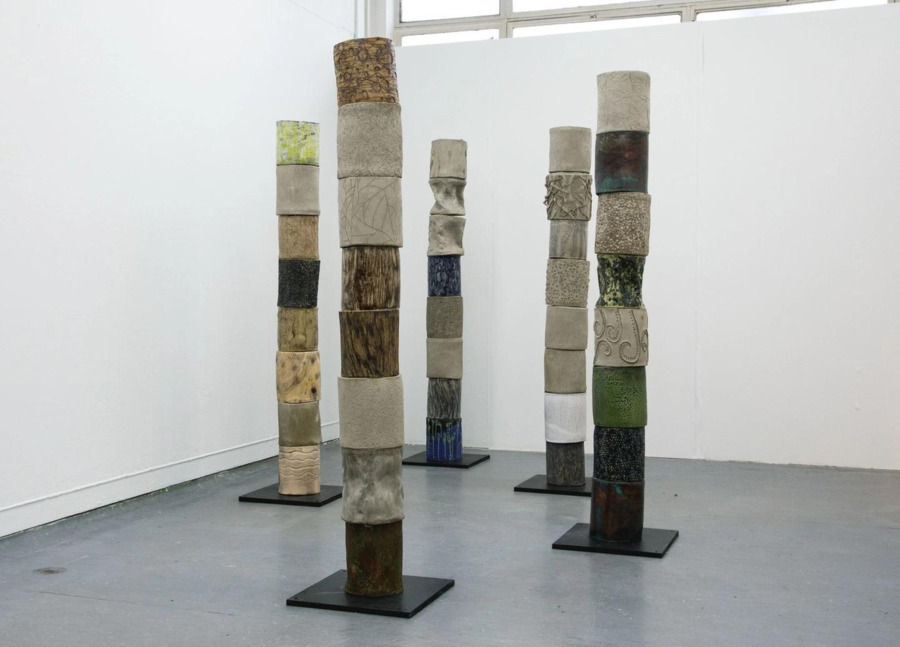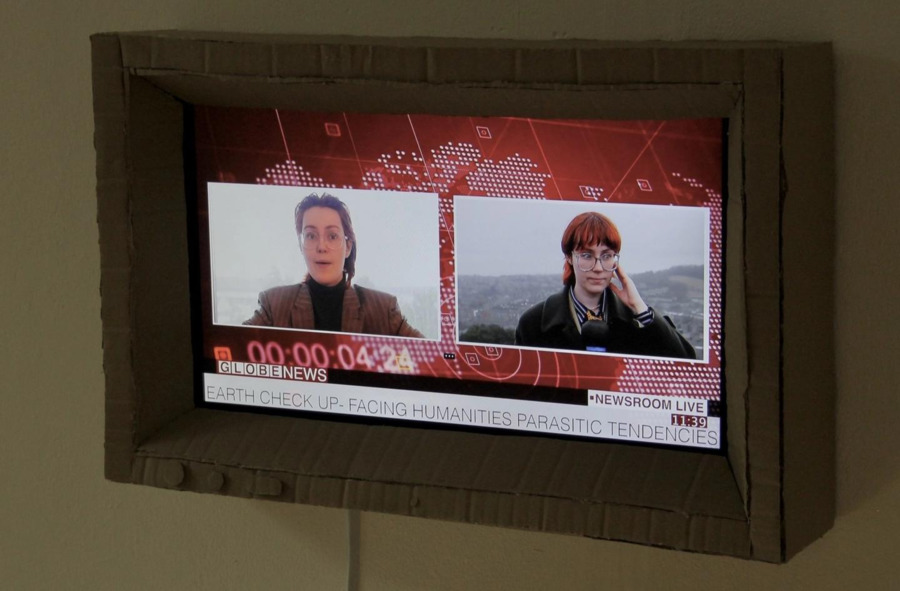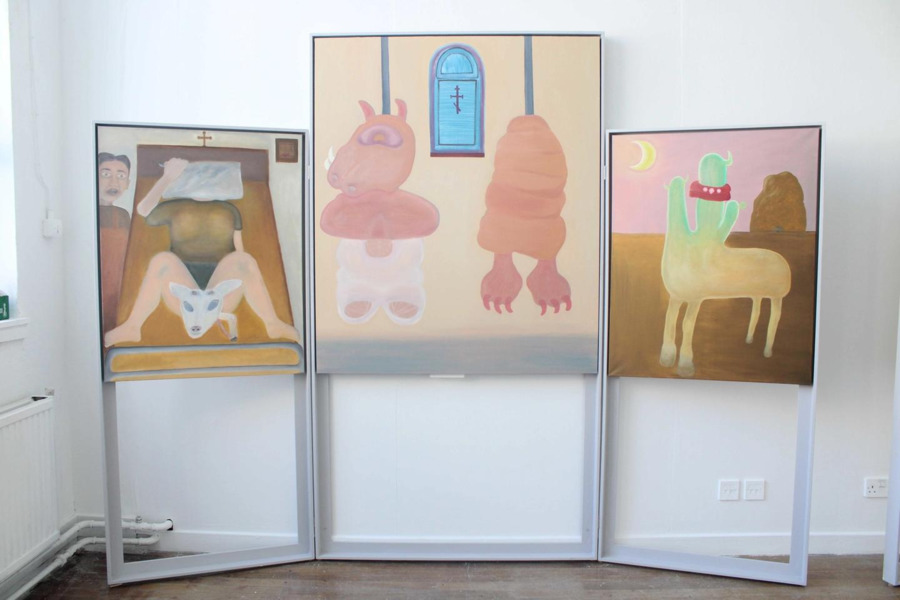DJCAD Degree Show 2024: The Review
Students graduating from Fine Art courses at DJCAD this year explore experiences of landscape, the sex work industry and human belief systems
The Duncan and Jordanstone College of Art and Design, Dundee hosted its annual undergraduate degree show between 25 May and 2 June, showcasing works by 490 graduating students across its twelve departments, many of whom had enrolled during the pandemic years. The departments of Art & Philosophy and Fine Art collectively exhibited the works of 80-90 students across two buildings. The projects demonstrated an experimental but committed approach, addressing personal, social, cultural, spiritual, political, and ecological perspectives; interweaving elements of history, fiction and the contemporary. Given that the undergraduate course is designed to allow a fluid crossover between the various artistic practices, the students evidently have utilised and experimented with various mediums and materials to conduct their research, and design their projects.
Among a number of projects exploring climate crises, Grace Pitman Ross has created an intriguing work using biodegradable materials including cardboard, teabags, paper and wood collected over the last few months. The installation replicates a living room scene, featuring a limp cardboard figure seated in a chair, watching a faux news channel played on television reporting emergency climate news and pleading with people to save the planet. Lamps, red lights and an eerie atmospheric soundtrack deployed a sense of urgency, contrasted with the figure’s air of complacency and habituation as it lays disengaged and boxed-up within the very world that is disintegrating as a consequence of these actions.
Kristína Gondová observes her relationship with landscapes she traverses, and builds her works using material foraged during her walks; in the process preserving the histories of the land and allowing these natural elements to mould her works. Titled On the Pot’s Road, the project evokes a Stone Age aesthetic, with a series of uniquely shaped ceramic pots placed on low stools leading up to a kiln and a nest-like shelter. A map traces the path she walked across the Cairngorms with a pot strapped to her back, listing the places and materials she discovered and gathered along the way. The work in its physical form thereby recreates a part of this journey.
Alana Brand’s project consists of cylindrical ceramic and plaster sculptures installed to form pillars, positioned across a series of embossed prints on the wall. Central to these large-scale works is the exploration of themes relating to the Anthropocene and its detrimental impact on the environment. Mark-making and textures resembling imprints engraved by human activity form the surfaces of these works. The textures further draw on microscopic imagery that resemble magnified details from the surrounding landscapes, creating an effect akin to natural and artificial fossilisation left by layers of civilisation.
Kerry Donohoe delves into her personal struggle with Irritable Bowel Syndrome, using humour to depict her experience of navigating between food and the ensuing medication. She presents a circular moving table set with three chairs inviting the audience to engage with the various food items meticulously crafted from bronze, occupying three ceramic plates and a fruit bowl. A shelf installed on the wall holds ceramic tablet boxes with protruding medicine strips, making references to the notions of pleasure, anxiety and relief, undeniably suggesting the interdependent relationship between food and medication.
In his work titled Freakshow, R.L. Taylor explores themes of religion, mythology, conspiracy, escapism and ritual as a means to address feelings of guilt. Drawing on religious and Christian iconography, the paintings are presented as two triptychs, composed of softly coloured whimsical figures and fictionalised characters set within magical landscapes. The paintings are meant to serve as portals to the viewer, either forming escape routes or becoming a barrier. It further delineates the cycles of birth and death, highlighting our emotional toil and the complex relationship we share with systems of belief in the contemporary world.
Esme Valentine speaks from her personal experiences of working in the sex industry. Two large works installed on the wall are created from collaged shirts and suits, overlaid with paintings of women in inviting poses. The discomfort evoked in the viewer becomes a ground for critical discussions around power, desire and consent, challenging the viewers to delve inwards and recognise their assumed notions around female sexuality. These works highlight a society that subjects sex workers to disrespect and censorship, while also objectifying and commodifying their bodies.
Alice Snowdon’s abstract collages made up of photographs, film and audio delve into family archives and her own identity. She has transformed the space to resemble a familial living area, complete with a rug and an analogue TV. The fragmented sequence of photographs investigates her connections to her family past and present, not only through inherited objects, but also through traits, emotions and the notion of touch revisited through the recurring motif of hands. The work emphasises the disjointed nature of memory as it is passed down through the generations.
dundee.ac.uk/graduate-showcase


